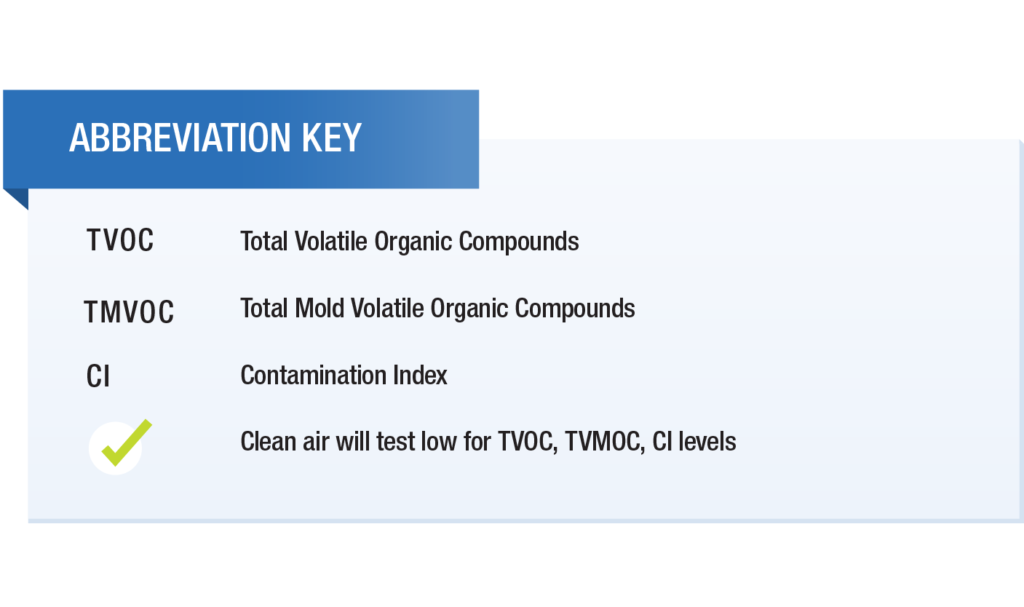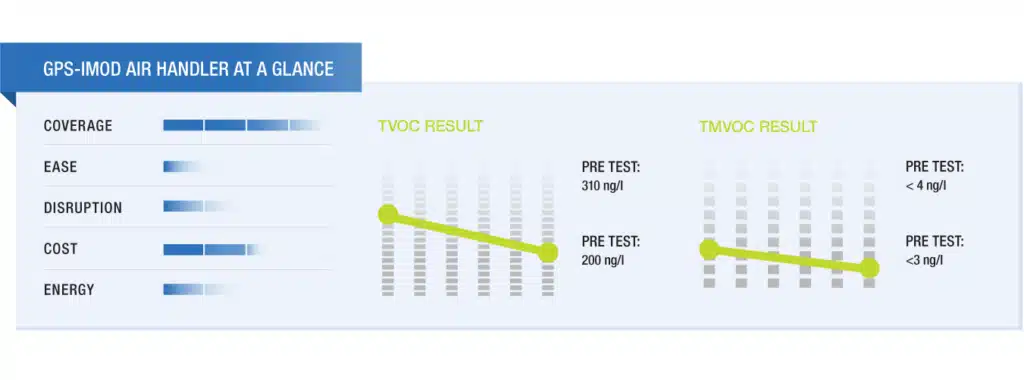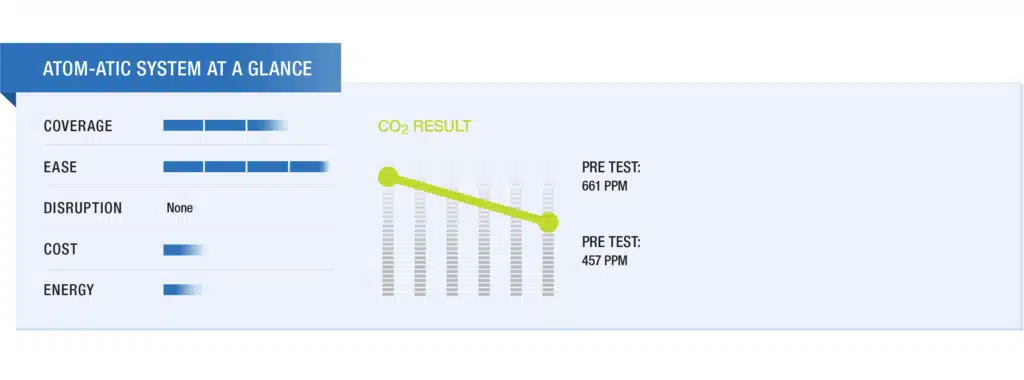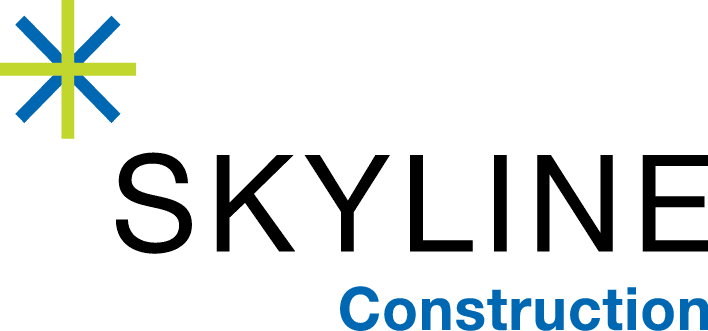Knowledge Sharing
Why Now is the Time to Invest in Air Quality Improvements
The road back to the office after this 2+ year pandemic has been paved with numerous false starts and stops prompted by new variants of the virus. Now that big tech and a number of other industry giants have announced their return to office plans, businesses everywhere are also beginning to ramp up their strategies. With so much at stake, many businesses are taking every precaution to ensure the safety of their employees, with air quality at the top of the list.
In a recent survey, 60% of workers cited air quality as a major factor in their hesitation to return to the office. Poor air quality has been linked to a myriad of illnesses ranging from headaches and fatigue to the spread of viruses. Upgrading air systems drastically improve air quality, limiting the spread of infection and ultimately, putting minds at ease. Investing in air quality upgrades is a way to make a big difference with long-lasting effects.
There are multiple air quality improvement systems on the market with mixed reviews based on effectiveness and cost. Our team has been conducting air quality studies for our clients since the beginning of the pandemic and have installed and tested a variety of solutions. We researched methods of air purification, narrowed down the best-performing systems, and distilled the information to make it easier for you to choose the optimal solution for your business.
How These Systems Work Using Bipolar Ionization
Advanced air treatment systems often use a technology called bipolar ionization. How is this different than a standard air filter you find in air conditioning units? Standard HVAC systems rely on filters, which are effective to an extent, but not against microscopic particles that are small enough to pass through the filter.
Bipolar Ionization purifies the air in 3 steps

Step One
Oxygen molecules in the air are extracted and turned into positive ions. This produces clusters around microparticles such as viruses, bacteria, mold, and allergens, and deactivates those airborne irritants.
Step Two
The positively charged ions attach to expelled particulates and droplets and enlarge them to make them easily trapped by a MERV 13 filter.
Step Three
The combination of these two processes provides constant disinfection. Not only do these systems provide an extra level of protection from COVID-19, but they also help keep the air clean of allergens, dust and viral germs.
To conduct each study, extensive data was taken before and after the installation of the air systems. The air samples are tested for TVOC, TMVOC, and CO2 and CI levels which are undetectable to the naked eye. Additionally, the space is tested for environmental contaminants such as paint and solvents, which can account for varying TVOC levels. Within a month of installation, significant decreases in the TVOC, TMVOC and CI levels were reported. Based on the results, here are 3 systems that we recommend, each with varying coverage, effectiveness, ease of installation, cost and more.

GPS-iMod Air Handler
How it works this
This type of unit services the whole floor – the unit is installed to the air handler and works upstream of the medium and low-pressure ductwork, which treats the air before reaching the fan power boxes
Air quality coverage
If modifications are made to an air handler unit, it will serve the full floor or the square footage of space it is servicing.
Ease of installation
Very easy, modifications are only made upstream at a single point, however, the ease is dependent on where the mechanical unit is located on the floor or within the building.
Disruption to work
Installation will take a few days to complete and will cause minimal disruption.
Cost
$$
Energy consumption
Low
Final Result
Overall, the results show an improvement in the quality of the air due to a 35% decrease in TVOC levels.

GPS-iMod Fan Power Box/AC Unit
How it works this
This style of unit works downstream and is installed at each fan power box or ac unit location on the floor. The quantity of HVAC units per square foot varies from building to building depending on system type and tenant space requirements.
Air quality coverage
The range is dependent on the zoning design. On average, each fan power box or AC unit will handle 1,200 to 3,000 sq. ft. of space.
Ease of installation
Installation requires workers to get above the ceiling to make modifications to each of the units.
Disruption to work
Due to ceiling work, this method would be a disruption to the area of employees, if the space is occupied.
Cost
$$
Energy consumption
Low
Final Result
Overall, the results show an improvement in the quality of the air due to a 32% decrease in TVOC levels and a 73% decrease in TVMOC levels.
GPS-iMod Fan Power Box/AC Unit
How it works this
Tracking indoor carbon dioxide (CO2) levels is an inexpensive and powerful way to monitor the risk of people getting COVID-19, according to new research from CIRES and the University of Colorado Boulder. When excess indoor CO2 levels double, the risk of transmission also roughly doubles. The Atom-Matic System can help significantly reduce CO2 levels in an indoor space. The stand-alone, portable unit can be placed in any room and is powered by a standard outlet to instantly filter the air. A monitor is attached to the outside of the unit and reports the level of air quality in real-time.
Air quality coverage
One Unit Covers 1,500 sq. ft. of space. This unit should be used in smaller square foot templates & localized areas for the most economical approach.
Ease of installation
Rolls on wheels, install is very easy, just plugin and turn on. Disruption to work in occupied space: It is louder and creates noise in the space. Wind tunnel sound.
Disruption to work
There is no disruption during installation. The machine is rolled in and plugged into a power outlet, the installation is completed in an hour or less. There is no impact once installed.
Cost
$
Energy consumption
Low
Final Result
Overall, the results show an improvement in the quality of the air due to a 31% decrease in CO2 levels.

Every space and system is unique. Some air handlers service each floor, while others are located on the roof and service multiple floors. In addition to air quality control experience, our team is also knowledgeable in WELL and LEED and can provide input on which system would best suit your needs and budget. Contact us to learn more – a member of our team is happy to facilitate a custom consultation.


AUTHOR
WES KLOCKOWSKI
SR. PROJECT MANAGER
Growing up in Chicago, Wes was always infatuated by the growing city skyline. Mentored by his Uncle who worked for one of Chicago’s biggest GC’s, Wes was able to learn the intricacies of building in some of Chicago’s most iconic buildings. These experiences inspired Wes to pursue a degree in Civil Engineering and Business Management. Now, with over 10 years of industry experience, Wes has completed major projects in Chicago and Pittsburgh and brings a unique perspective and clear track record of client satisfaction to the ACCEND team. Wes is fully dedicated to the success of his projects, and believes that no goals are unreachable for him and his project team.
DOWNLOAD
READ NEXT
